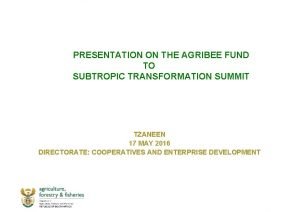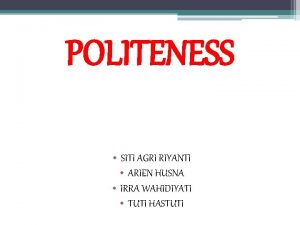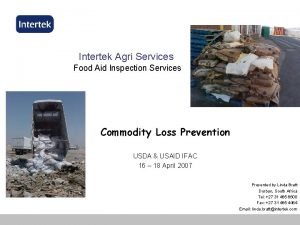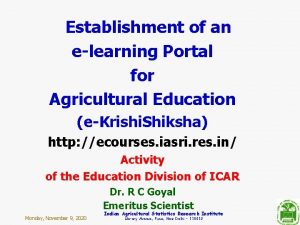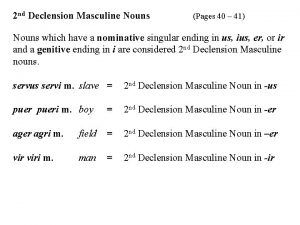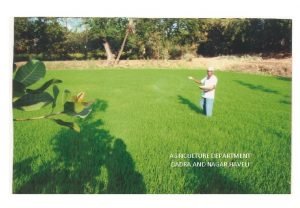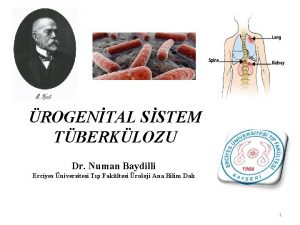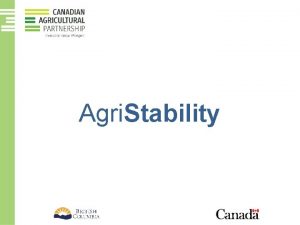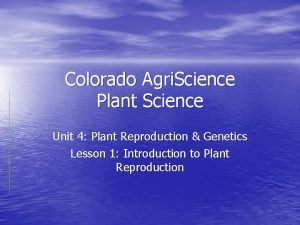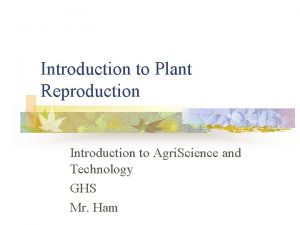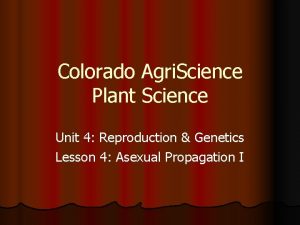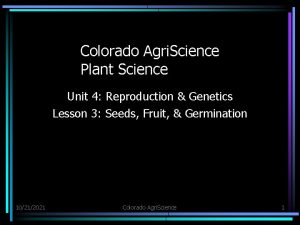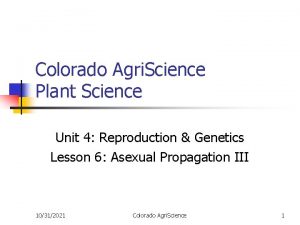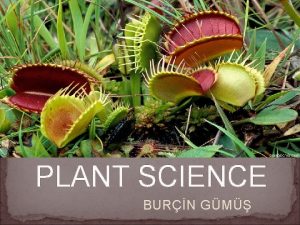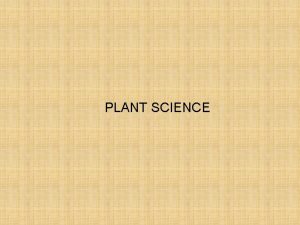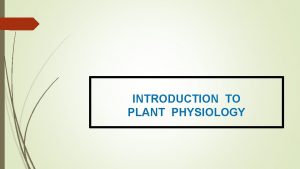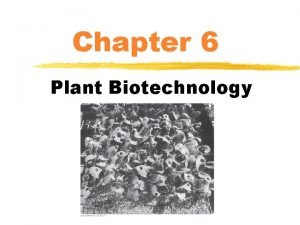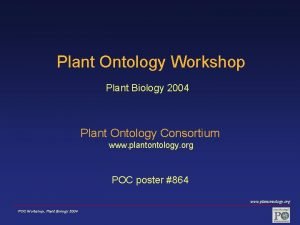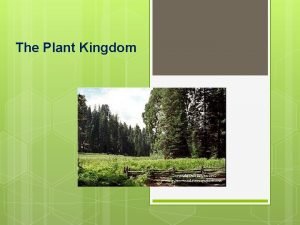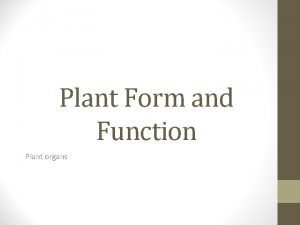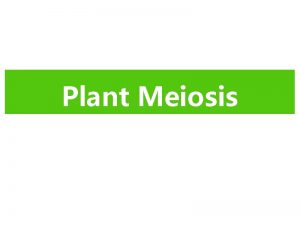Introduction To Plant Science Introduction To Agri Science
























- Slides: 24

Introduction To Plant Science Introduction To Agri. Science

Objective 1. 1 What roles do plants serve in the ecosystem • Plants serve several roles in our ecosystem by providing the following items: – Oxygen – Food – Reduce soil erosion – Medicines

Objective 1. 2 How plant differ from animal • Plants differ from animals in several ways – Plants produce their own food with the aid of nutrients from the soil. – Plants are stationary. – Plants have rigid cell walls with cell membranes inside. – Plants utilize carbon dioxide and give off oxygen.

Objective 1. 3 List how plants and animals are alike. • Plants and animals are alike in several ways. – They have a life cycle. – They carry on life processes, such as circulation, respiration and growth. – They are made of cells. – They must have food.

Objective 1. 4 List three major factors that affect plant growth • Major factors in climate that effect plant growth include: – Temperature • Warm season plants start growing in the spring and finish in the fall. I. e. , bananas, oranges, cotton and corn. • Cool season plants have a life cycle that begins in the fall and ends when summer begins. I. e. , wheat, rye, and oats.

Objective 1. 4 (cont. ) • Precipitation • Light

Objective 1. 5 Define life cycle in terms of plants and how they are classified • Life Cycle: refers to the length of the plant’s life. • Plants can be classified into three groups on the basis of their life cycle: – Annuals- complete life within one year. – Biennials- complete life cycle in two years. – Perennials- plants live for more than two years. • Deciduous- plants that lose their leaves in the winter. • Evergreens- plants that retain their leaves year round. – *Plants may be perennials but only used as an annual in the agricultural industry. I. e. cotton

Objective 1. 6 List the different parts of a plant • Parts of the plants are of two major kinds: – Vegetative • Leaves- makes food for the plant through a process known as photosynthesis. –Blade -Veins –Epidermis -Stomata –Internal cells -Waxy coating –Petiole -Stipule

Parts of a Leaf

Objective 1. 7 List the two different types of leaves • Leaves are divided into two groups: –Simple –Compound

Simple Leaf

Compound Leaf

Objective 1. 8 List the three ways leaves attach to the stem • Leaves attach to the stem in several different ways. –Alternate –Opposite –Whorled

Alternate Attachment •

Opposite Attachment •

Whorled Attachment

Objective 1. 9 List the different functions of the stem • The stem supports the leaves and flowers. • The stem transport water and other materials. • The stems also store food.

Objective 1. 10 List the different parts of the stem • Bark • Cortex • Phloem • Cambium • Xylem • Pith


Xylem & Pholem •

Objective 1. 11 List the types and roles of roots • Role of roots – Roots anchor the plant. – Roots take in water and minerals. – Roots store energy. • Types of roots – Taproots – Fibrous roots

Taproot

Fibrous Root

Taproot vs. Fibrous •
 Plant introduction in plant breeding
Plant introduction in plant breeding Plant introduction in plant breeding
Plant introduction in plant breeding Plant introduction in plant breeding
Plant introduction in plant breeding Agribee fund
Agribee fund Siti agri
Siti agri Lfp agri
Lfp agri Intertek agri
Intertek agri Agri education portal
Agri education portal Vital agri nutrients
Vital agri nutrients What is agri entrepreneurship
What is agri entrepreneurship Burford ağrı termometresi
Burford ağrı termometresi Tegral agri sheeting
Tegral agri sheeting Nunc dicam agri quibus rebus colantur
Nunc dicam agri quibus rebus colantur Agri82
Agri82 Ketrolak
Ketrolak E urvarak.nic.in
E urvarak.nic.in Agri biosciences cit
Agri biosciences cit Identify the declension ager agri m
Identify the declension ager agri m Agri bee
Agri bee Agriculture in dadra and nagar haveli
Agriculture in dadra and nagar haveli Ulnar sinir muayenesi
Ulnar sinir muayenesi Ağrı tutak mesleki ve teknik anadolu lisesi
Ağrı tutak mesleki ve teknik anadolu lisesi Kalça ekleminin kapsüler paterni
Kalça ekleminin kapsüler paterni Dr numan baydilli
Dr numan baydilli Visseral ağrı
Visseral ağrı



